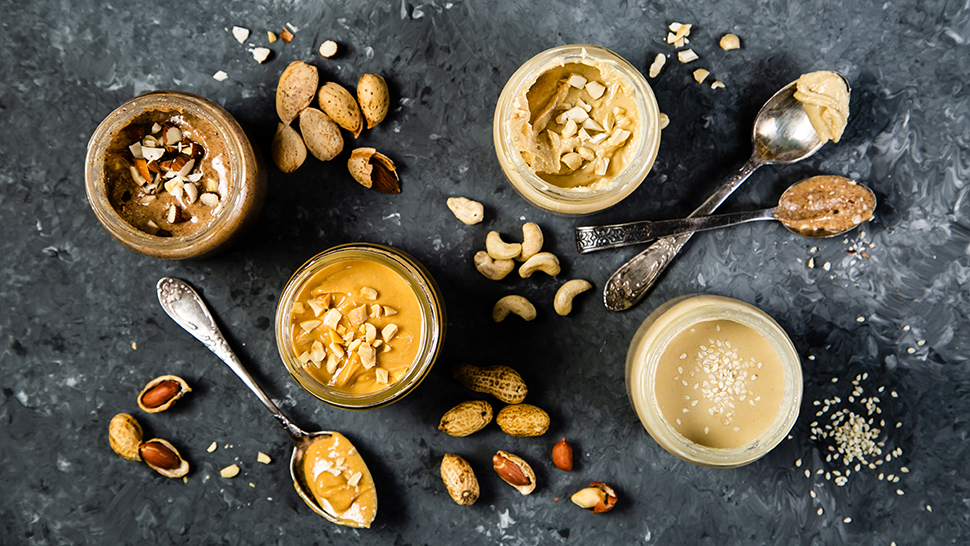
What’s the buzz?
Consumers are going nuts for all types of nut (and seed) butters
What does the science say?
Gone are the days of having two choices for your nut butter — crunchy or creamy. These days, the nut butter aisle is as overwhelming as the yogurt aisle, with endless brands, more types of nuts and seeds than you even knew were edible (watermelon-seed butter?!?), dozens of flavors, and just as many different health claims. The good news is, there are a lot of great brands and types to choose from: you just have to wade through some of the sneaky marketing claims to find them.
The beginning of the nut butter revolution dates back to the discovery that hydrogenated oils (also known as trans fats) are bad for our health. The hydrogenated oils that were once used to stop separation and to give the nut butter an ultra-creamy texture are now banned from foods (with a few exceptions that will be implemented by 2021), so many companies have replaced them with palm oil. Palm oil is not as unhealthy for you as trans fat, but is still 50 percent saturated fat, which may increase LDL cholesterol (the kind that some research still finds concerning), so it’s best to choose nut butters without palm oil as well. (Many consumers are also troubled by the environmental impacts of palm oil, too.)
Some brands add sugar to their nut butter. Since added sugar has been linked to a variety of health concerns, this is another thing to skip — or at least limit and consider as part of your total added sugar intake for the day. A good guide is 3 grams of sugar or less per serving. And beware: “low-fat” options are often packed with added sugar, and they’re missing the healthy fats that are good for your heart and brain while increasing the satisfaction level of these foods.
What about added protein, which some companies are also tossing in (from egg whites and whey protein to soy and pea protein isolates), to appeal to Americans’ obsession with protein? The addition usually has minimal impact beyond the label: A typical peanut butter made from peanuts and salt has 8 grams of protein per 2 tablespoons, whereas “high-protein” nut butters contain 9-12 grams. Many of these enhanced nut butters also come with a hefty dose of added sugar or artificial sweeteners.
What’s the takeaway?
The difference between all of the nut and seed butters out there primarily comes down to taste and price. Some have slightly more fat and others slightly more protein, and they may vary in vitamin and mineral content as well — but the variations don’t make a significant difference in your health.
Read ingredient lists — nuts (or seeds) and salt is all you really need. Some health enthusiasts believe that peanut butter causes inflammation due to the higher amounts of omega-6 fatty acids (a type of polyunsaturated fat), but research suggests otherwise. And finally, a little stirring to stave off separation is better than adding palm oil to your diet.